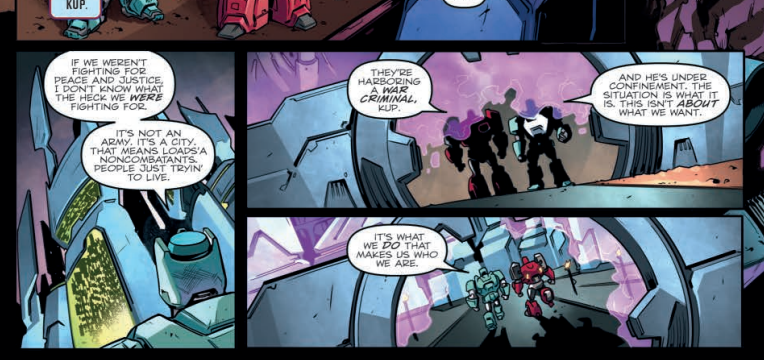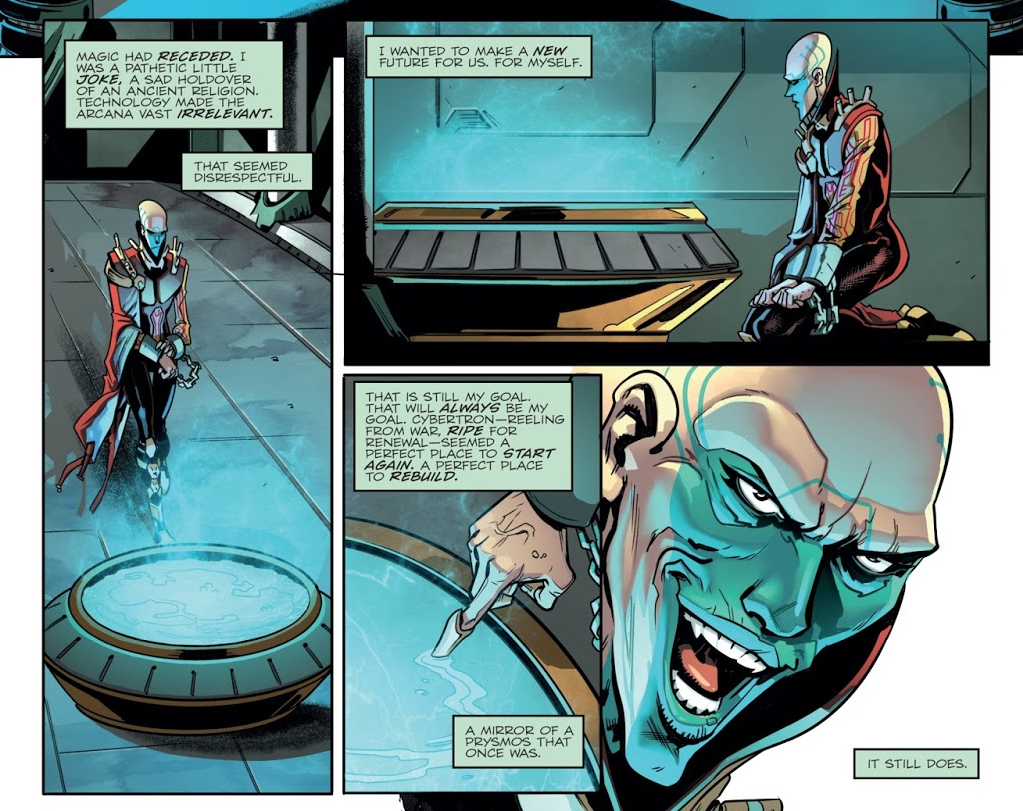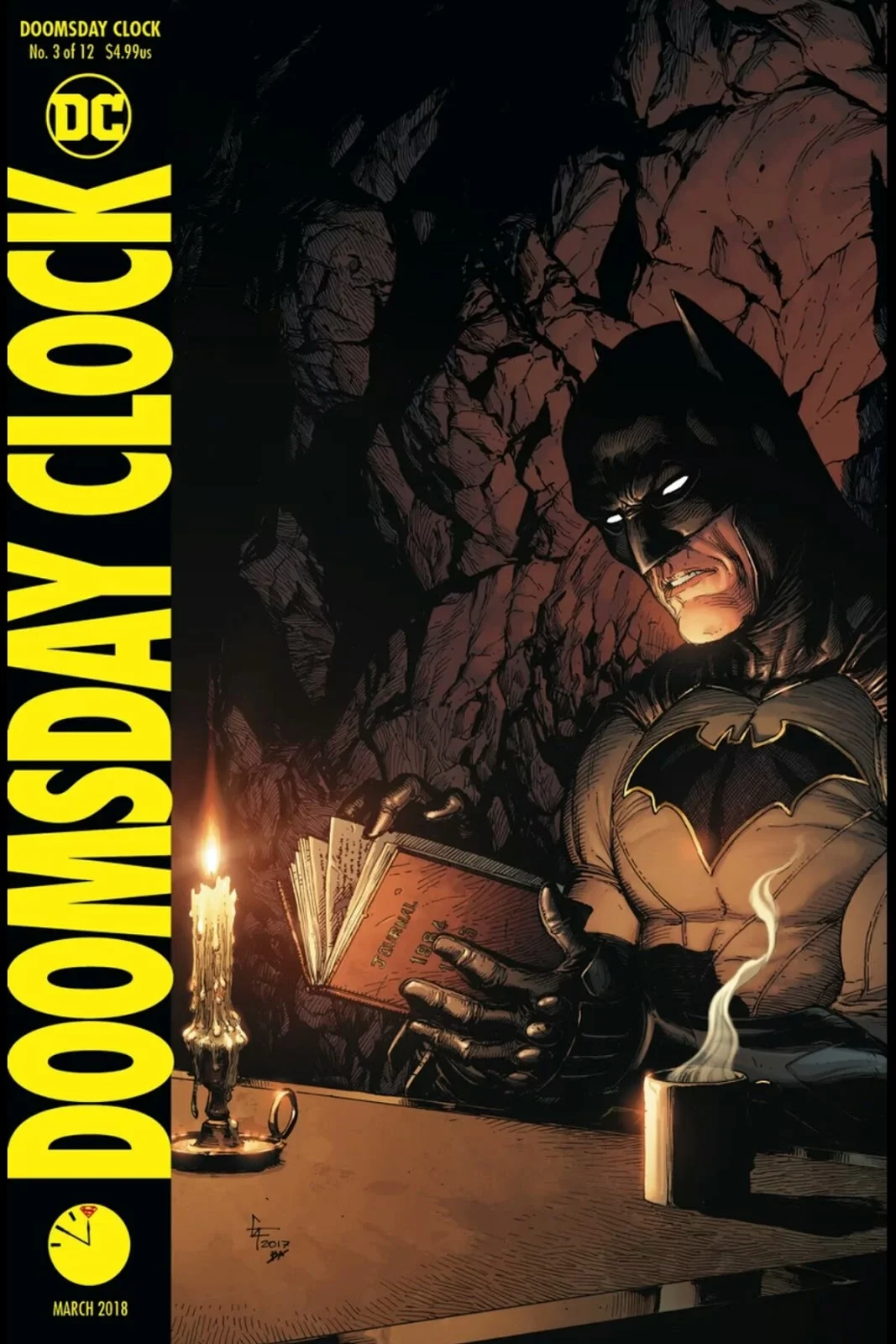Transformers Vs. Visionaries #1 Review
It was a bold move by all involved when Hasbro expanded a now 13 year old relationship with IDW Publishing in 2016. In addition to IDW making licensed books from Hasbro’s most popular properties like Transformers, G.I. Joe, or My Little Pony, Hasbro decided to give attention to their lesser known franchises.The likes of Rom Spaceknight, The Micronauts, and MASK were all to be given new life by top industry talents like Christos Gage on Rom, or Cullen Bunn with the Micronauts. But Hasbro and IDW took things one step further by integrating the properties together under the umbrella of a shared universe. Now we had adventures where Miles Mayhem from MASK would align with Destro from G.I. Joe, Rom could soar to adventure with the small but fearsome Micronauts, and the mighty and technologically advanced Transformers could test their metal against the magical prowess of the Visionaries! The later two groups are the subject ot the aptly named mini-series: Transformer Vs. Visionaries, by Magdalene Visaggio and Fico Ossio, taking place during the immediate fall out from a previous company wide event called First Strike. Issue one proves a very promising start to the crossover that captures the attention of the reader, sets the stakes, but is marred a bit by some script hiccups and awkward art.
The First Strike event was a substandard one that came way too early in the lifetime of this universe. In addition to the whole experiment having been started in a cross-over called Revolution, there were also two smaller crossover mini-series that occured between the larger Revolution and First Strike. Event fatigue, a concept familiar to buyers of DC and Marvel’s endless onslaught of crossovers (sometimes featuring a character literally named Onslaught), was setting in and demoralizing the fans who wanted to avoid these giant, explosive comic blockbusters by buying independent titles in the first place. IDW and Hasbro were just repeating the mistakes of the Big Two. With so much baggage, Transformers Vs. Visionaries seems doomed from the start, but it surprisingly works, offering fans the breath of fresh air they have been wanting.
After the conclusion of First Strike, where Joe Coulton (the eponymous “G.I. Joe”) recruited a team of Hasbro villains to destroy the Transformers, it was revealed that General Garrison Kreiger was in fact the wizard Merklynn of Visionaries fame. Merklynn was manipulating events to bring magic to Cybertron and terraform it into a new home for his people of Prysmos: the setting of Visionaries that has become uninhabitable in this new comic universe. Merklynn’s plans did not turn out as he intended, but he did bring Prysmos greatest city to Cybertron, with its citizens in tow as refugees. And so the central conflict between the Transformers and the Visionaries becomes both races trying to find a solution before another conflict between them erupts. Should the Cybertronians reject the Visionaries, even if that means sentencing an entire race to death? What say do the Visionaries even have in their own survival? How does Merklynn’s actions change the dynamic of these questions, especially considering he is a war criminal currently apprehended for orchestrating the attempted invasion seen in First Strike? All very intense questions that give the story weight and, to the credit of writer Magdalene Visaggio, are at least partially addressed in issue #1.
Visaggio creates a dynamic set up for her story, but also provides engaging world-building and character interaction, the latter coming in the form of several debates between the characters regarding the fate of the refugees. Similar to Transformers, the classic (and short-lived) Visionaries tv series featured two main factions, the heroic Spectral Knights and more self-serving Darkling Lords, two groups of knights endowed with the primal mystical powers of their world. Both groups of Visionaries are currently at peace with each other, putting aside their agendas to better focus on helping their people. There is an element of redemption to this, as it is partially the Visionaries’ conflict with each other that resulted in their world being in the terrible state it is in. However, just because they are not in combat does not mean they are not at odds, with the Knights and Lords in total disagreement with how to deal with this crisis. The Spectral Knights push for a cooperative solution above all else, while the Darkling Lords look to a military solution, considering this all stemmed from Invasion. The use of debate in this book is a great way to push the story forward and inform the audience of the characters motivations if they come in unfamiliar with the franchise.
Another brilliant move in the script was how Visaggio puts the previously established histories of her characters to work for her. The Visionaries momentary truce is akin to the peace time enjoyed by the Transformers titles since 2012, One-off attempts at reigniting the war from the likes of Galvatron aside, the Transformers books of late have told fascinating stories of a post-war Cybertron. The stories are now character focused dramas, detailing the emotional toll that 4 billion years of war can have on a species like the Transformers, and the struggle they now face to rebuild a society of tense former combatants. It definitely has contributed to the quality of the books, and has given the Transformers staple at IDW a unique identity from the rest of the franchise and its current comic competitors. In story, however, making the character dynamic between the crossover participants so parallel adds a new layer of depth in regards to the relationships to their respective races as well as each other. Outside of these pages the characters may be “good guys” and “bad guys” in the respective action 80s toy lines they originated from, but, within more nuanced pages, they are groups plagued by constant conflict struggling to recapture their own destinies, as demonstrated by the conversation between Spectral Knight Leoric and one of the older Transformer characters, Kup.
Another change this new status quo has created for Visionaries is the disappearance of the leader of the Darkling Lords, Darkstorm. Once again contrasting the Transformers books, where Megatron had gone on a path of redemption following the end of the war, Darkstorm is nowhere to be seen (save for a pretty swanky dictator statue) now that the Visionaries are in a state of cooperation, leaving the once token female member Virulina to now take center stage as the Darkling Lord leader. This nice addition to the mythology helps the book be more contemporary, as is changing the race of Leoric to a man of color.
Purists might take issues with these alterations, but the mainstream audiences do not seem to be that torn up about it as it does not change the story. For better or for worse, what Visionaries hardcores should really be concerned with is the portrayal of Merklynn. In the original cartoon, Merklynn was a neutral character providing both factions of Visionaries with magic to survive a world where technology had failed due to a solar alignment disaster of Prysmos’ three suns which made the planets technology inert. Here he is made a more aggressive almost villainous character, willing to cause disarray and even death for the sake of his own power and relevance, be it on Prysmos and here on Cybertron, a move that offers a lot of story possibility, but one that some fans might think is too out of character even for a different adaptation.
The art is by a veteran for this universe, Fico Ossio. Ossio is known for a cartoon-y stylized sensibility that works best for action sequences, be they fighting or some sort of tense moment. And while there is certainly some of that in this first issue, unfortunately the majority of the book is more exposition based with the exchange of ideas from its various characters. While it is great for set up, it does clash a bit when Ossio’s kinetic style is brought to a halt in so many still, subdued scenes. It does not bring the book down by any means, but it can be a bit jarring at times.
Overall, this issue is the definition of a serviceable introduction that promises more. Now that the setup is done and the seeds have been planted, Visaggio and Ossio can focus on all of the action that Vs. titles are known for. It is a good jumping on point for new readers unfamiliar with this larger universe, and though there are certainly references to other events or important notes in regards to character motivations, it's all for the audiences benefit, and does not become so continuity-heavy to become off putting. A very satisfying beginning to the face off of two worlds.
B-













